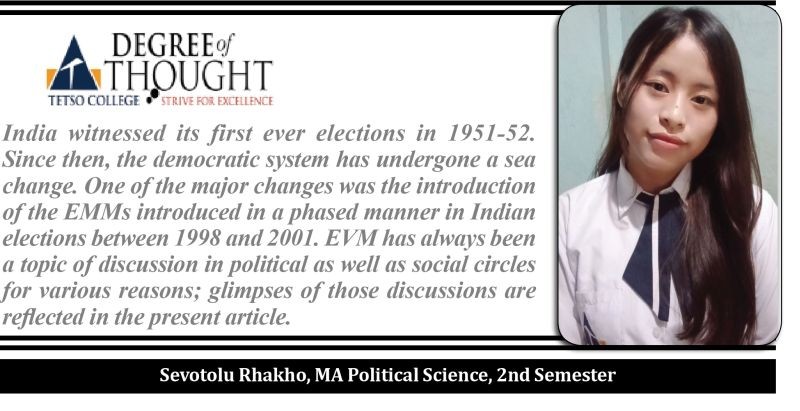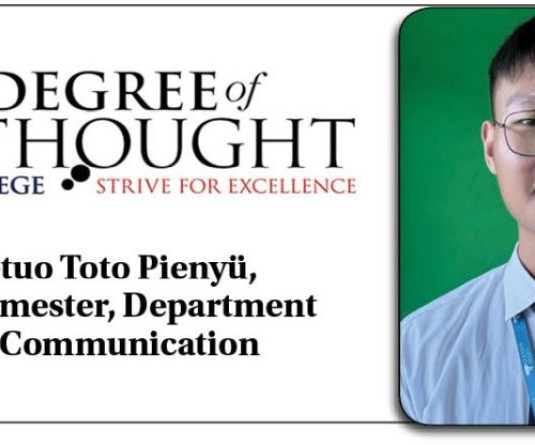
Elections in India are conducted through Electronic Voting Machines (EVMs) and postal ballots nowadays. Elections in India are always a festive affair. It is the biggest proof of our democratic values and respect for the Constitution. People over 18 years of age are allowed to cast their votes and to choose their representatives through, making their citizenships count and develop the society. Election season has put together a series that seeks to deconstruct various aspects of the massive democratic exercise to make every citizen aware of its history, processes, rules and other relevant information. Free and fair elections are must for a thriving democracy, as it converts voter’s preferences into a political mandate that forms the basis for policy making.
Election in India by using EVMs started more than 30 years after getting independence. Until then only ballots were used. Finding that there were many malpractices like vote rigging, forged voting, booth capturing with muscle powers, time consumption in getting the paper ballots packed and to avoid the wastage of tons of paper during election process, the Election Commission of India (ECI) thought of a better way of using voting rights by citizens and EVMs were introduced. EVMs in India was developed and tested by the Bharat Electronic Ltd and Electronics Corporation of India Ltd
Accordingly, the ECI first used the EVMs in 1982 in the by-election to North Paravur Assembly Constituency in Kerala at some of the polling stations. Later the EVMS were used in select constituencies of Delhi, Madhya Pradesh and Rajasthan. The experiments were found successful and later in 1999, the EVMs were used in the Goa Assembly general election. In 2003, all by-elections and state elections were held using EVMs. After that, the ECI decided to use only EVMs for Lok Sabha elections in 2004 and did away with paper ballots.
The Economic Intelligence Unit, while measuring our democracy index, gave India’s Electoral process a score of 9.17 on 10. This success is mostly owed to the ECI.
Now, let us know about the differences between EVMs and ballots paper to see which is better in the interest of democracy, which are:
1. EVMs are easier to transport compared to ballot boxes as they are lighter, more portable, and come with polypropylene carrying cases. Voting is also faster in places where illiteracy is high, people find EVMs easier than ballot Paper systems.
2. EVMs provide faster result announcement, elimination of miscounting of votes or the simplicity of the vote casting method. The system has become faster and more trustworthy while others still believe that ballot paper has no chance of being hacked. However in this regard, the ECI threw an open hacking challenge in June 2017 for whoever claimed that the EVMs could be tampered with. This challenge came amidst various claims by cyber experts that they could be hacked and pre-programmed. Among the most prominent cases was the cyber expert Syed Shuja who claimed via a Skype Interview from London that he was among the developers of the machine and could hack EVM. However, his claims were proven invalid when he could not hack the machine.
3. In the paper ballot method of voting, if the stamp is not put properly it will be counted as an invalid vote. With EVMs this problem will be eliminated. Though developed countries went back to paper ballots, for them it won’t take much effort because of their small population, and hence we cannot say that it is apt for all countries. Decisions should be taken based on all the factors involved.
EVMS and ballot paper both has a vital role in conducting elections, some of their shortcomings are as follows:
1. Ballot paper leads to wastage of paper and a retrograde step. When even the most polluting industries are trying to become greener and reduce their carbon footprints, using paper on such a huge scale despite more eco-friendly options being available is a direct neglect of the environment.
Whereas EVMs malfunctioning during the election process has been reported in the past as a result of some inherent defects in a particular machine. However, the machine is replaced on receipt of the malfunction report, the voting process remains hampered for the time being and sometimes a repoll is conducted.
2. Time Consuming Manual Ballot Counting: The votes cast are counted manually and is a tiresome and error prone task. There were approximately 80 crore registered voters in India during the 2014 General Elections and this figure is expected to increase more in the coming elections. Counting 80 crore votes manually is quite difficult and takes many days to count and arrive at the result. EVM tampering is intentional and is not backed by any evidence so far of being possible.
Even though quite a few controversies surround EVMs, it all revolves around whether the EVMs can be hacked or tampered with, which has not been proven so far. These controversies by far are nothing compared to the unfair practices that were witnessed when the paper ballots were being used to cast votes during elections. Unless there is proof of tampering with EVMs, they are definitely the better option, but if they are in fact hackable, it might lead to catastrophe during elections which will be predetermined. Thus, research and development should not be stopped to make the EVMs tamper proof and make the elections safe and fair for everybody. But reverting to paper ballots is definitely a retrograde step that must be avoided on accounts of the more unfair practices itself.
Degree of Thought is a weekly community column initiated by Tetso College in partnership with The Morung Express. Degree of Thoughtwill delve into the social, cultural, political and educational issues around us. The views expressed here do not reflect the opinion of the institution. Tetso College is a NAAC Accredited UGC recognised Commerce and Arts College. The editors are Dr Hewasa Lorin, Dr Aniruddha Babar, Khangpuiliu Pamei, Rinsit Sareo, Meren and Kvulo Lorin. For feedback or comments please email: dot@tetsocollege.org.






